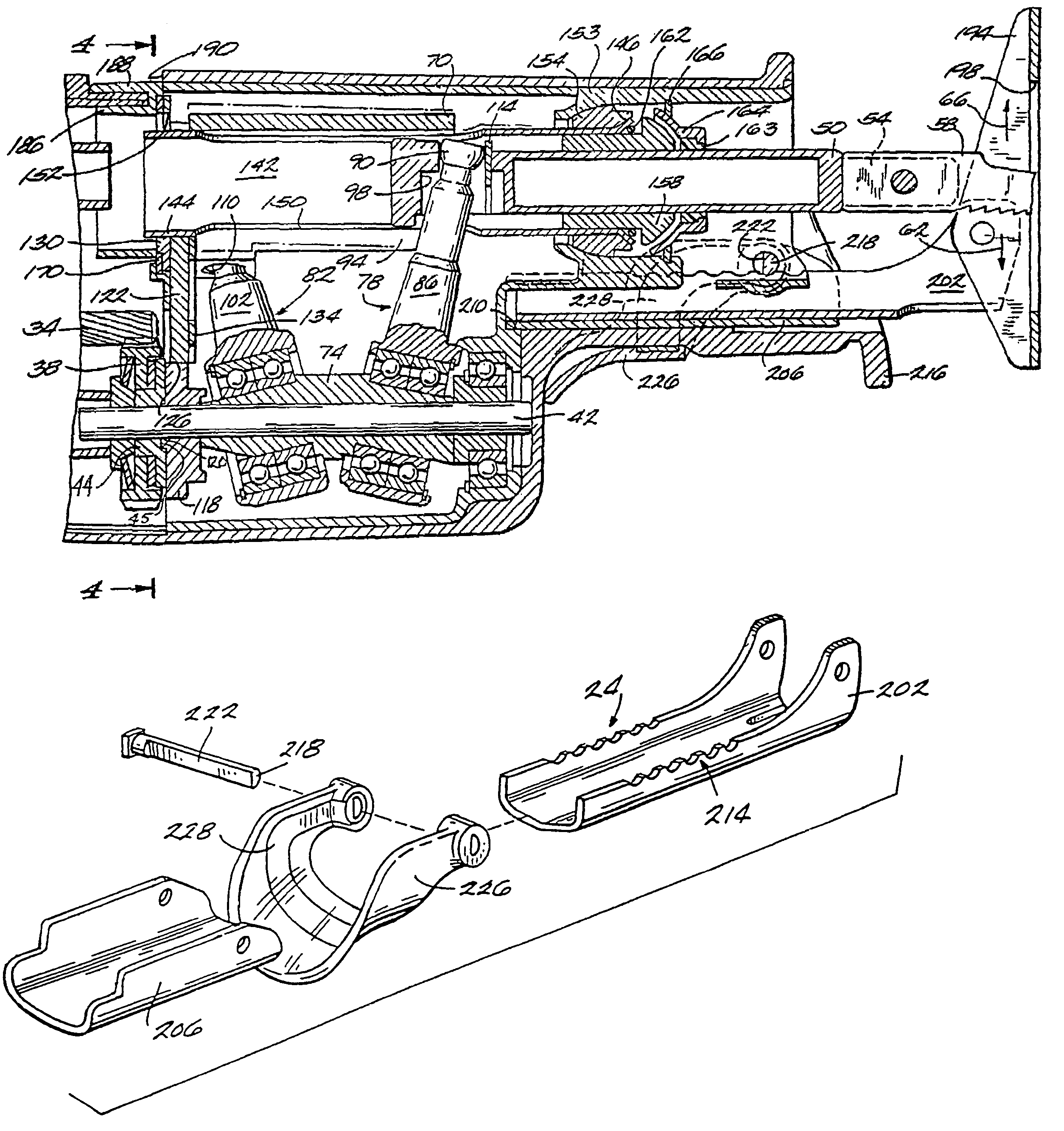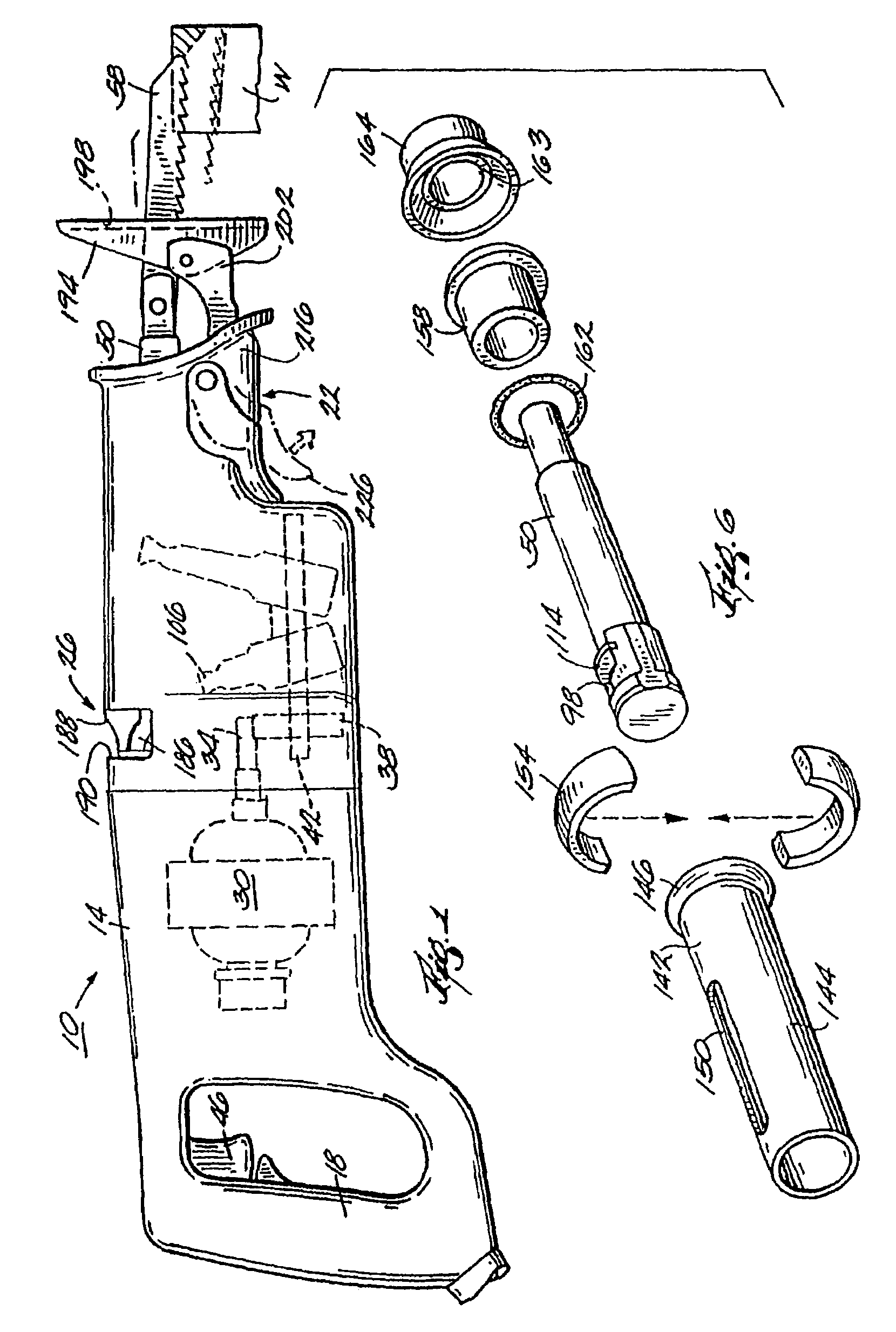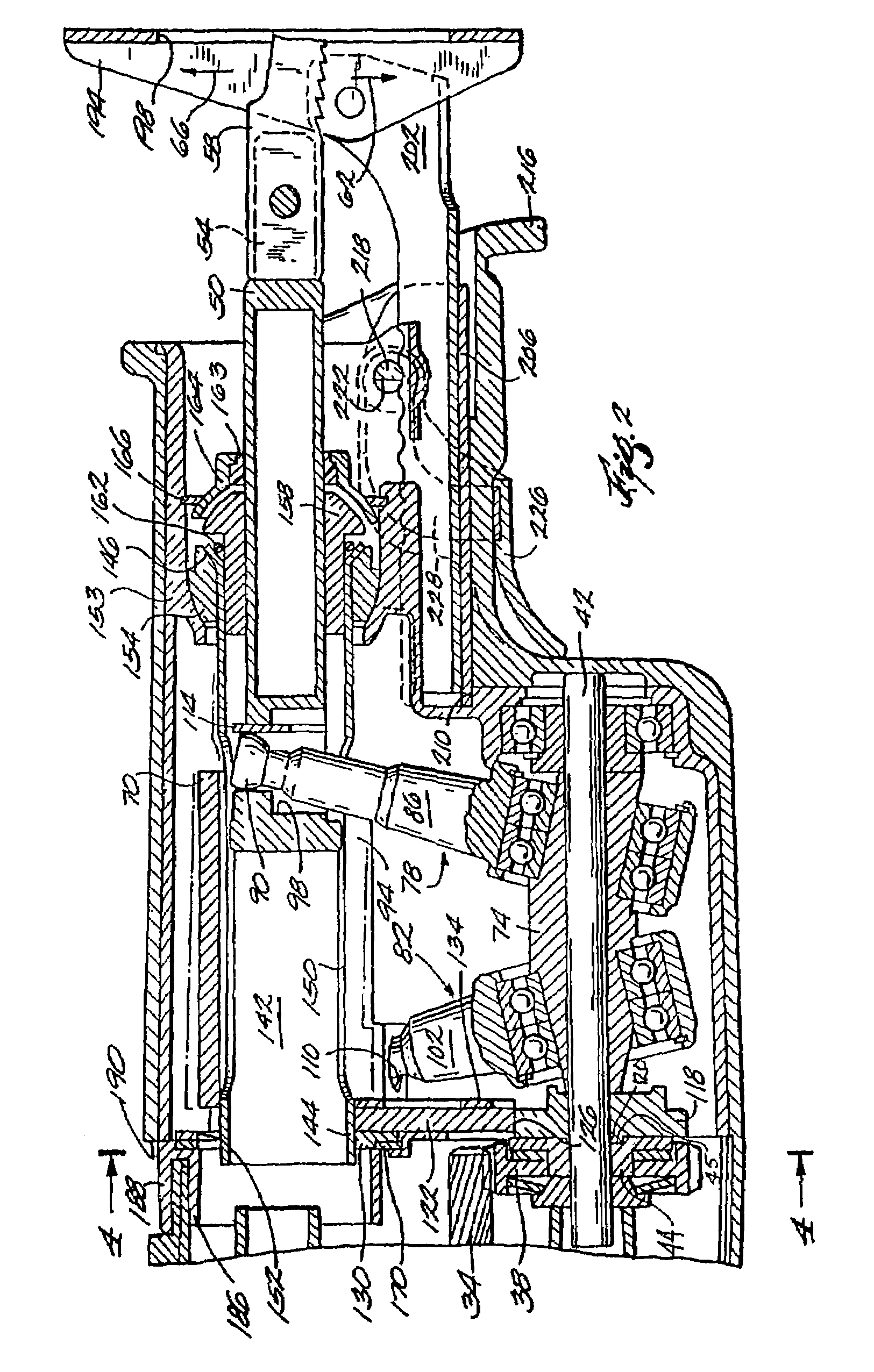Reciprocating saw
a reciprocating saw and saw blade technology, applied in the field of reciprocating saws, can solve the problems of increased manufacturing cost of the saw, tight tolerance of the joint, and required machining, so as to reduce the cost of manufacturing the saw, reduce the noise level of the saw, and prolong the life of the saw
- Summary
- Abstract
- Description
- Claims
- Application Information
AI Technical Summary
Benefits of technology
Problems solved by technology
Method used
Image
Examples
Embodiment Construction
[0045]A reciprocating saw 10 embodying the present invention is illustrated in FIG. 1. The reciprocating saw 10 generally includes a main housing 14 having an operator's handle 18, a forward portion 22 opposite the handle 18, and an upper portion 26.
[0046]An electric motor 30 is supported by the housing 14. The motor 30 includes a drive pinion 34 that engages a gear 38 mounted on a drive shaft 42. The drive shaft 42 is rotatably mounted within the housing 14. A drive hub 44 is mounted on the drive shaft 42 and is connected to the gear 38. The hub 44 defines an off-center pocket 45. A switch 46 is located in the operator's handle18 for energizing the motor 30 to rotate the drive shaft 42.
[0047]A spindle 50 (partially shown) is supported by the housing for reciprocating and pivoting movement (e.g., orbital movement) relative to the housing 14. As shown in FIG. 2, the spindle 50 includes a front end 54 that supports a saw blade 58, which is designed to cut in a cutting direction 62 (i....
PUM
 Login to View More
Login to View More Abstract
Description
Claims
Application Information
 Login to View More
Login to View More - R&D
- Intellectual Property
- Life Sciences
- Materials
- Tech Scout
- Unparalleled Data Quality
- Higher Quality Content
- 60% Fewer Hallucinations
Browse by: Latest US Patents, China's latest patents, Technical Efficacy Thesaurus, Application Domain, Technology Topic, Popular Technical Reports.
© 2025 PatSnap. All rights reserved.Legal|Privacy policy|Modern Slavery Act Transparency Statement|Sitemap|About US| Contact US: help@patsnap.com



